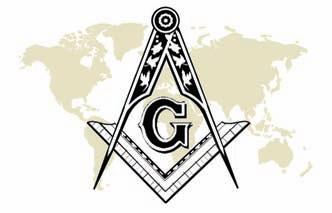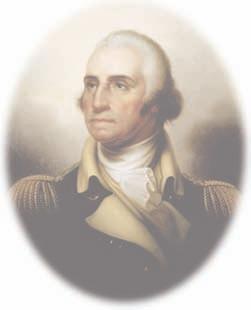
7 minute read
Membership in the Grand Lodge
EDITORIAL NOTE: This article was prepared before his death by Carl R. LeVine, Grand Historian, for publication in The Voice of Freemasonry. It serves to remind us of the breadth of Carl’s interest in all facets of Masonry in the District of Columbia. Carl R. Le Vine ,
Grand Lecturer Emeritus
July 4, 1776 has always been considered by the American people to be the date of this country’s independence from England. Yet it was not until April 4, 1789 that the government of the United States of America held the first session of Congress in Federal Hall in New York City. President George Washington and Congress very quickly saw the necessity for a permanent home for the new republic and decided to meet in Philadelphia for the next 10 years until such a place could be prepared. The president, with three Commissioners operating under his direction, decided upon and fixed the boundaries of a 10-mile square of territory which included the cities of Alexandria in Virginia and Georgetown in Maryland on both sides of the Potomac River. The cornerstone of the new Federal District was placed on April 15, 1793, with full Masonic ceremonies, Since there was no capital city when the boundaries of the Federal District were laid out, the plan was to build an entirely new city in an area within the district that was set apart for it. The entire 100 square mile area of the Federal District included Alexandria, Georgetown, and the City of Washington, and in 1811 it had a total population of only 24,023. Five lodges, with a total membership of around 250, constituted the Grand Lodge in that year. At the end of the first decade, in 1821, the returns of the lodges showed a total of only 210 members, despite the addition of two lodges during that period. WB Kenton N. Harper, in his History of the Grand Lodge and Freemasonry , offers a possible explanation of this falling off of numbers. In that work he states that “attention should be given to the fact that instead of separate units owing allegiance to distant Grand Bodies, the Lodges were welded together with common interests, and responsible to a common authority at their very doors, and this condition might well be supposed to result in the exercise of more special care in the selection of material and the weeding out of objectionable timber.” The William Morgan affair, beginning in 1826, created such an ominous cloud of public suspicion and political outrage that the very existence of the Craft was threatened. Many Lodges, particularly in the northern part of the country, were hit hard. The Grand Lodge of the District of Columbia seemed to hold up fairly well in the period 1827 - 1829, perhaps because of having some influential support in the Capital. Anti-Masonry reached its climax during the period 1229—1832; however, the members of the Grand Lodge, while not going into hiding “adopted a policy of careful circumspection and governed themselves accordingly.” All of this must have influenced the acquisition of new members because at the end of 1830 the total membership was still under 300.
Between the years 1829 through 1845 the proceedings of the Grand Lodge were not printed and membership data available is uncertain and fragmentary. But it may be safely surmised that the membership in the Grand Lodge may have reached its lowest point sometime during those years. As political and public pressures began to subside, the well being of the Grand Lodge improved, and with the resumption of normal activities, the yearly proceedings were regularly printed. At the close of 1850 the total membership of the then eight working Lodges had grown to 405. The viability of the Grand Lodge continued to improve during the next decade. The proceedings grew in size and specifics, with more extensive coverage of all Grand Lodge work, and the returns of Lodges were reported in detail. By the end of the fifth decade the total number of members had reached 829.
During the difficult years of the Civil War, or as the fraternity was wont to refer to it - The War Between the States - the Grand Lodge took the position that “no war existed between the brethren of the Craft in Lodges or as Masons out of it whatever their political loyalties might be.” The general public was convinced anew of the good effects of the fraternity.
The period of the war witnessed a very impressive growth in numerical strength, the returns of lodges of 1863 showing a total of 1,233 and for 1865 a total of 1,720. The City of Washington had become, during this period, filled with and surrounded by thousands of soldiers and other members of the military, along with a large growth in civilian population. With a much improved pool of potential members available, the number of lodges grew to 15. As the City of Washington grew and became more significant in the world scheme of things, so grew the Grand Lodge of the District of Columbia. At the close of 1890 there were 22 lodges working and the total membership had reached 3,797. The Grand Lodge enjoyed a steady increase in membership, year by year, to 5,917 with 25 working lodges in 1900, and to 23,161 members in 44 lodges -in 1930. The level of membership in the Lodges held up remarkably well during the deep economic depression of the 1930s, dropping off gradually until by the end of 1943 there were a total of 19,767 on the rolls. Beginning in 1944, probably because of a mass influx of civilian workers into Washington, the membership began to increase, and by 1953 it reached an all time high of 25,334 members organized into 48 working lodges. Then for all of the well-appreciated reasons accounting for the decline of membership in the fraternity, a dramatic and continuous long slide in membership began, reaching a low of 4,642 members in 34 lodges in the year 2005. This decline reflects not only the factors that impact on all American Grand Lodges, but also on characteristics in consequence of Washington’s impact on the American way of life. As we think about these things let us recognize that on many an occasion Washington paused in his daily pursuits to appeal to his God, on behalf of America, as he did, in part, in 1783 with these words: unique to the District of Columbia alone. The District of Columbia lies between the States of Maryland and Virginia. The City of Washington has burst through the original Federal City and now encompasses the entire District. The 1960s and the l970s saw a general and continuing exodus of residents to the suburbs of metropolitan Washington which lie in Maryland and Virginia and are thus out of the jurisdiction of this Grand Lodge and unavailable as Masonic material. With the reservoir for potential new Masons receding, the future viability of the Grand Lodge became a matter of serious concern. Pressure for requesting waivers of jurisdiction increased over the years. Two of the three principal tenets of our order are brotherly love and relief. The Grand Lodges of Maryland and Virginia have both demonstrated the true meaning of brotherly love: Maryland by facilitating and easing their procedures for granting waivers of jurisdiction to this Grand Lodge and Virginia by changing its Masonic Digest in 1975 to allow concurrent jurisdiction with this Grand Lodge in the northern Virginia Cities of Arlington, Alexandria, and Fairfax and the Counties of Arlington and Fairfax, This legislation was sponsored by MWB Stewart W. Miner, Grand Master of Virginia in 1974 - 75 and subsequently Grand Secretary of the Grand Lodge of the District of Columbia.
The Grand Lodge of the District of Columbia continues to enjoy a very cordial and harmonious relationship with both of her sister jurisdictions and will share with them in the future prosperity of
George Washington, Early American Futurist
continued from page 11
the Craft. ■
“Almighty God: We make our earnest prayer that thou wilt keep the United States in thy holy protection; that thou wilt incline the hearts of the citizens to cultivate a spirit of subordination and obedience to government, and to entertain a brotherly affection and love for one another and for their fellow citizens of the United States at large.”
This touching exhortation suggests that our works and our words — our vision, if you will — like the works and words of our beloved Washington, should be generated today by no less a measure of love for God and country. It is to those ends, therefore, that I personally pledge myself on this glorious occasion, and I invite each and every one of you, the citizens of this great country, to join me in this noble resolve. God bless America. God bless the memory of George Washington. God bless you all. Amen. ■







